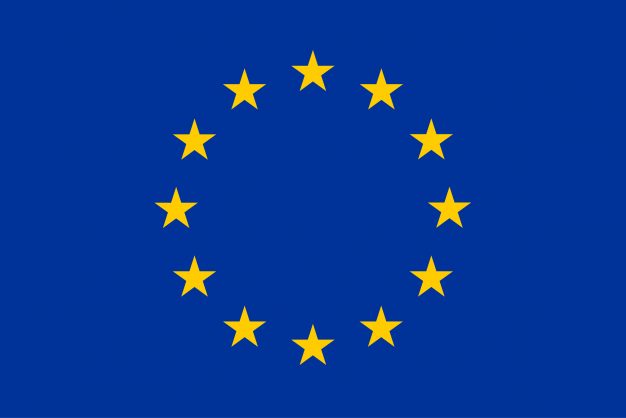
Medicines momentum: Europe sets stage for improved clinical trials
European Union researchers are accelerating the development of new treatments for children and other vulnerable groups.
In the 1980s, during the height of the AIDS epidemic, Professor Carlo Giaquinto was starting out as a paediatrician in Italy and noticed that the hunt for treatments overlooked an important segment of the population: children.
While various HIV drugs were being developed, children were absent from the clinical trials and – as a result – were denied access to life-saving medicines at the time.
Childcare
‘Children deserve the same medicines and care as adults,’ said Giaquinto, who is president of the Penta Foundation, a scientific organisation in Padua, Italy dedicated to advancing research into paediatric infectious diseases.
Clinical trials are research studies that test new treatments or medical devices on patients who volunteer to take part. Improving clinical trials is a win-win for patients, European citizens and the pharmaceuticals industry, making it the perfect challenge for a public-private partnership to tackle. The Innovative Medicines Initiative – a partnership between the European Commission and the pharmaceuticals industry – is supporting several projects in this field.
One such project is c4c – short for connect4children – a seven-year project that runs through April 2025 and has brought together clinics, companies, research institutes and universities across Europe to streamline clinical trials in children, successfully building a network of over 400 experts and 250 trial sites.
More than 60 organisations are involved. They come from 20 European countries, including the Czech Republic, France, Germany, Hungary, Ireland, Italy, Poland, Sweden, Switzerland and the UK.
As a project supported under the Innovative Medicines Initiative, c4c also receives industry funding and the project consortium includes pharmaceutical companies such as Bayer, Janssen and Novartis.
The goal is to forge a dedicated European network for paediatric clinical trials. That way healthcare professionals would be better able to carry out studies of children and tailor treatments for them.
“Our mission is to make more medicines available to children,” said Giaquinto, who is the scientific coordinator of the c4c project.
To him, the HIV epidemic four decades ago highlighted how the failure to include diverse population segments in clinical trials often leads to a lack of drugs that are safe and effective for everyone, including children.
AIDS drugs in the 1980s were available only for population groups covered by the clinical trials – in that case adult males.
While today children generally have more access to medicines, the ones given to minors are usually tested only on adults. For example, children worldwide are prescribed antihistamines, antibiotics and antidepressants that have been tested on adults before being approved by regulators.
All of this is because children are still overlooked in clinical trials. Fewer than 50% of medicines commonly used in children around the world have been studied in this population.
Between 1996 and 2018 in Europe, research led to the approval for adults of 563 new active substances – ingredients in medicines that make them effective. By contrast, 199 medicines were developed with paediatric indications over the period.
Tricky tests
One reason that fewer medicines are available for children is that a typical clinical trial in them is more complex than one in adults.
For example, because a toddler’s metabolism isn’t the same as a 10-year-old’s, different age groups need to be tested in instances when adults of various ages would be grouped together.
In addition, formulations need to be specially tailored to avoid harming a child’s body, which, unlike an adult’s, is changing significantly as it grows.
The c4c team is seeking to ensure that doctors and nurses are in a position to run clinical trials with children and offer emotional and psychological support to their families.
It’s producing a common set of paperwork in the form of documentation and templates that can be used to conduct both traditional trials and “platform” trials, which are more efficient because they allow several drugs to be tested at the same time.
To help ensure the viability of the European network being created under the project, the c4c team is also running traditional trials with academics and scientists from pharmaceutical companies, including Janssen and Roche.
For example, scientists are conducting a traditional study for children and young people with multiple sclerosis. The study is assessing the positive and negative effects of a drug that could help children and young people with the disease.
In another study, clinicians are assessing the effectiveness of paracetamol in extremely premature infants. The study is recruiting around 800 babies in 16 European countries.
The c4c consortium has also established a Dutch non-profit foundation – the connect4children Stichting – which will continue to provide expert services in conducting clinical trials for children beyond the end of the project.
The foundation, set up in May 2023, connects organisations seeking to carry out clinical trials on children with relevant trial sites and experts, speeding up the trial set-up, eliminating a lot of the initial logistical work and ensuring that clinical trials for children are aligned with the methodologies and templates validated by the project.
Time and money
While focused on just one drug, traditional clinical trials have their own set of challenges. These trials are time-consuming, expensive and difficult to manage. They usually compare two groups of patient volunteers – one with the new therapy being tested and another with the standard treatment.
Most new treatments go through four phases of clinical trials. The earlier phases last at least a few months and the later phases go on for years.
Before an ordinary trial can begin in Europe, researchers must first write a new guideline for each drug, assemble a team, recruit the patients and submit an application to the European Medicines Agency, according to Dr Annette Bakker, chief executive officer of the US-based Children’s Tumor Foundation (CTF) and the Chair of CTF Europe.
‘At the end of each trial, the entire infrastructure is disassembled and, for the next drug, you start all over again,’ she said. ‘It is like building a new house for every drug.’
Flexibility focus
Bakker’s foundation took part in an EU-funded project aimed at developing platform trials in Europe.
Called EU-PEARL, it ran for three and a half years through April 2023 and – like c4c – was a public-private partnership under the Innovative Medicines Initiative involving dozens of participants from numerous countries.
Platform trials are more flexible for two notable reasons. First, if one drug is ineffective, the trial can continue with the other drugs and the patients who volunteered can switch to another treatment after a suitable amount of time has passed to allow their bodies to metabolise any drug remnants.
Second, as new drugs are discovered, they can be added to the trial without a new one having to start from scratch. Neither of these options is possible in traditional clinical trials.
EU-PEARL developed a single framework for platform trials, meaning the team created templates, guidelines and other common resources that can help scientists and pharmaceutical companies to easily run such trials.
Shared resources
In particular, EU-PEARL researchers designed templates for trials in four disease areas: major depressive disorder, tuberculosis, non-alcoholic steatohepatitis – now called metabolic dysfunction-associated steatohepatitis – and neurofibromatosis, a rare genetic disease.
‘Companies can access all the documents we have created to help them run smooth platform trials,’ said Dr Joan Genescà, clinical director of digestive diseases at Vall d’Hebron University Hospital in Spain and the scientific coordinator of EU-PEARL.
One platform trial, on neurofibromatosis type 1 and schwannomatosis – both types of a rare genetic disorder that causes tumours to grow along the nerves – is currently being set up by the Children’s Tumour Foundation and the Global Coalition for Adaptive Research, based on the template established by EU-PEARL.
Neurofibromatosis and schwannomatosis are life-long chronic progressive disorders with multi-organ symptoms, so thanks to the project’s results in this area, many patients of all ages (children, adolescents and adults) stand to benefit from new treatments.
EU-PEARL’s template for tuberculosis platform trials is also being used by a clinical trial being run by another Innovative Medicines Initiative project – Unite4TB. Thanks to the framework developed, the trial will be able to test 14 combinations of nine existing drugs, as well as two newly-developed candidate drugs.
This will significantly speed up the development of the new drugs desperately needed to treat the 1.1 million children that contract the disease every year.
Patient voices
The flexibility of platform trials is particularly important for rare diseases because so few patients exist that it’s difficult to enlist them multiple times. “About 30 per cent of rare disease trials fail because researchers can’t recruit patients in time,” said Bakker.
Platform trials developed by EU-PEARL also give patients a voice by allowing them to work with the researchers on the design. This means that various trial procedures, such as taking blood samples, administering drugs and carrying out tests on patients, can be scheduled in a way that works for both researchers and volunteers.
Platform trials can be a game changer in European drug development, not least for children.
‘Children are of course a vulnerable population, but there’s an ethical need to give them the best evidence for treatments,’ concludes Giaquinto.
This article was originally published in Horizon, the EU Research and Innovation magazine
Research in this article was funded by the EU’s Horizon Programme via the European Research Council (ERC). The views of the interviewees don’t necessarily reflect those of the European Commission. If you liked this article, please consider sharing it on social media.




